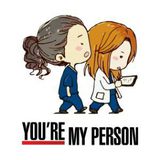

There are two general categories of porphyria: acute, which mainly affects the nervous system, and cutaneous, which mainly affects the skin. Some types of porphyria have both nervous system symptoms and skin symptoms. Signs and symptoms of porphyria vary, depending on the specific type and severity. Porphyria is usually inherited — one or both parents pass along an abnormal gene to their child. Although porphyria can't be cured, certain lifestyle changes to avoid triggering symptoms may help you manage it. Treatment for symptoms depends on the type of porphyria you have. Symptoms Symptoms of porphyria can vary widely in severity, by type and among individuals. Some people with the gene mutations that cause porphyria never have any symptoms. Acute porphyrias Acute porphyrias include forms of the disease that typically cause nervous system symptoms, which appear quickly and can be severe. Symptoms may last days to weeks and usually improve slowly after the attack. Acute intermittent porphyria is the common form of acute porphyria. Signs and symptoms of acute porphyria may include: Severe abdominal painPain in your chest, legs or backConstipation or diarrheaNausea and vomitingMuscle pain, tingling, numbness, weakness or paralysisRed or brown urineMental changes, such as anxiety, confusion, hallucinations, disorientation or paranoiaBreathing problemsUrination problemsRapid or irregular heartbeats you can feel (palpitations)High blood pressureSeizures Cutaneous porphyrias Cutaneous porphyrias include forms of the disease that cause skin symptoms as a result of sensitivity to sunlight, but these forms don't usually affect your nervous system. Porphyria cutanea tarda (PCT) is the most common type of all the porphyrias. As a result of sun exposure, you may experience: Sensitivity to the sun and sometimes artificial light, causing burning painSudden painful skin redness (erythema) and swelling (edemaBlisters on exposed skin, usually the hands, arms and faceFragile thin skin with changes in skin color (pigment)ItchingExcessive hair growth in affected areasRed or brown urine When to see a doctor Many signs and symptoms of porphyria are similar to those of other, more common conditions. This can make it difficult to know if you're having an attack of porphyria. If you have any of the above symptoms, seek medical attention. Risk factors In addition to genetic risks, environmental factors may trigger the development of signs and symptoms in porphyria. When exposed to the trigger, your body's demand for heme production increases. This overwhelms the deficient enzyme, setting in motion a process that causes a buildup of porphyrins. Examples of triggers include: Exposure to sunlightCertain medications, including hormone drugsRecreational drugsDieting or fastingSmokingPhysical stress, such as infections or other illnessesEmotional stressAlcohol useMenstrual hormones ― acute porphyria attacks are rare before puberty and after menopause in women Complications Possible complications depend on the form of porphyria: Acute porphyrias can be life-threatening if an attack isn't promptly treated. During an attack, you may experience dehydration, breathing problems, seizures and high blood pressure. Episodes often require hospitalization for treatment. Long-term complications with recurrent acute attacks may include chronic pain, chronic kidney failure and liver damage.Cutaneous porphyrias can result in permanent skin damage. Also, the skin blisters can become infected. When your skin heals after cutaneous porphyria, it may have an abnormal appearance and coloring, be fragile, or leave scars. Prevention Although there's no way to prevent porphyria, if you have the disease, avoid triggers to help prevent symptoms. Because porphyria is usually an inherited disorder, your siblings and other family members may want to consider genetic testing to determine if they have the disease, and get genetic counseling if needed.

